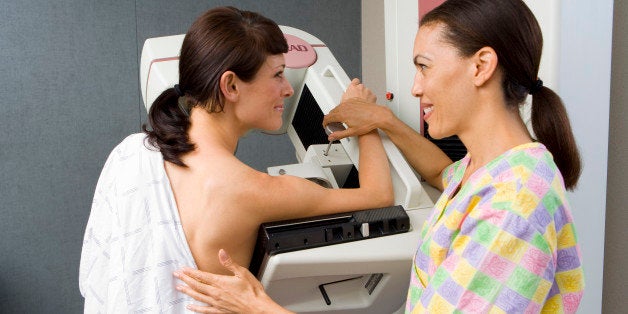
Last week, in the wake of the new American Cancer Society [ACS] mammography guidelines recommending that screening mammography should be conducted later in life and with less frequency, I shared the personal story of 28-year old Jennifer*, who reported a breast lump to her doctor but was told that it was "probably nothing," and that she was too young for a mammogram. Well, a lot of folks had a lot to say on this topic. And so, I'd like to continue the conversation.
After decades of educating the public about the importance of early detection, the new guidelines are indeed confusing and controversial. In the new guidelines, the recommended age for annual screening mammography was increased from age 40 to age 45 for women "of average risk for breast cancer," with biennial mammography for women between the ages of 55 and 74. But what does "of average risk for breast cancer" mean? According to the ACS guidelines, women are at average risk for breast cancer if they do not have:
- a personal history of breast cancer
All other women, therefore, are at "average risk" for developing the disease. For these "average" women, the new recommendations are as follows:
- Women ages 40 to 44 should have the choice to start annual breast cancer screening with mammograms if they wish to do so. The risks of screening as well as the potential benefits should be considered.
While increasing the recommended age for annual mammograms, ACS does acknowledge that "regular mammograms can often help find breast cancer at an early stage, when treatment is most likely to be successful. A mammogram can find breast changes that could be cancer years before physical symptoms develop. Results from many decades of research clearly show that women who have regular mammograms are more likely to have breast cancer found early, less likely to need aggressive treatment (like surgery to remove the entire breast [mastectomy] and chemotherapy), and more likely to be cured." So why the change?
The cynical side of me attributes the change to one thing: money. Modifying the guidelines to exclude a population based on age and "average risk factors" significantly reduces the number of mammography studies performed each year, which translates into millions of dollars paid-for by insurance companies. We've all heard stories of young survivors and women who were diagnosed who had no known risk factors at all. Such a broad-brush elimination of a significant segment of the population will undoubtably result in delays in diagnosis for these women.
Following the new guidelines announcement, Dr. Judy Salerno, President and CEO of Susan G. Komen (best known for its Race for the Cure events all over the world) responded, "Although guidelines may differ regarding the age at which routine screening should begin, there is agreement that mammography is the best available tool for detecting breast cancer and that women and their health care providers should decide when those screenings should begin for individuals." Salerno further pointed out that the timing of mammography fails to take into consideration that "women must have better and more accurate information about their individual risk for breast cancer so that they and their providers can make informed decisions about the screening schedule that is right for them." As I wrote in my previous post, there is grave risk that the new guidelines will create the perfect storm for a slippery-slope whereby insurance companies will have an open-door to deny coverage for screening mammography. As Dr. Salerno also noted, while the new guidelines aren't binding on health care providers or payers, "we are concerned that they have the potential to lead to reduced accessibility to and coverage for health screenings from both private and public insurers."
Imagine this scenario: 41-year old mother with none of the risk factors described above has a grain-sized lesion in her breast that she cannot feel. She did not get a mammogram at age 40. She does not get a mammogram at age 41. She does not get a mammogram at age 42. nor at age 43. She does not get her recommended-annual screening mammogram until four years later, at the ripe old age of 45, at which time the little grain is now the size of a small ball. And the cancer has spread.
Patient Self-Advocacy -- Steps You Can Take To Protect Yourself:
- Raise Your Voice! Challenge the new mammography guidelines because you are not a statistic (and don't want to become one.)
Please share your comments and shared experiences! I will continue to blog about this topic, and hope that you will join me in reinforcing the message that Womens' Health Matters and early detection saves lives.